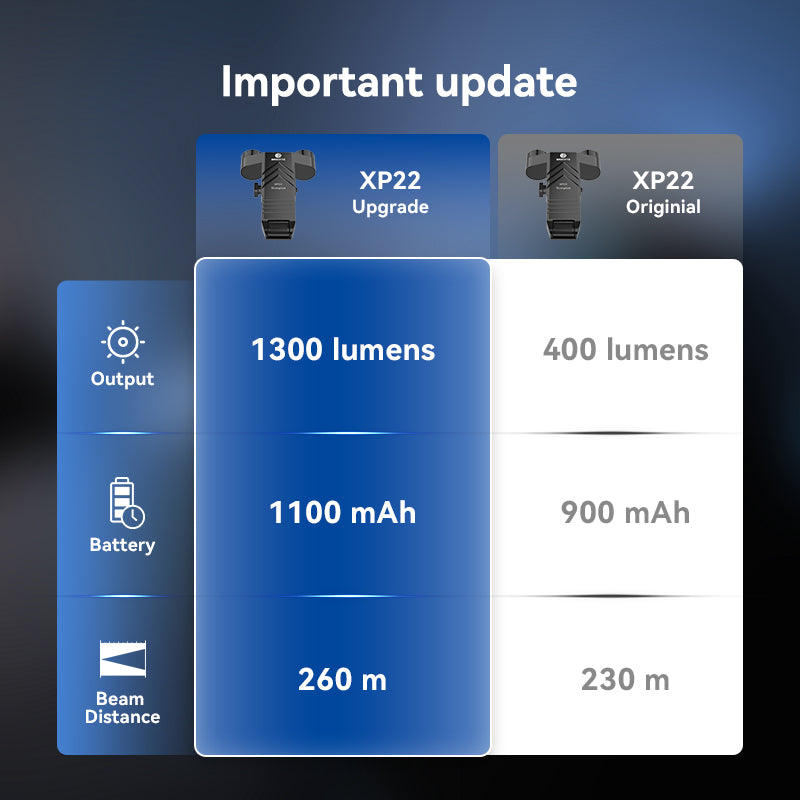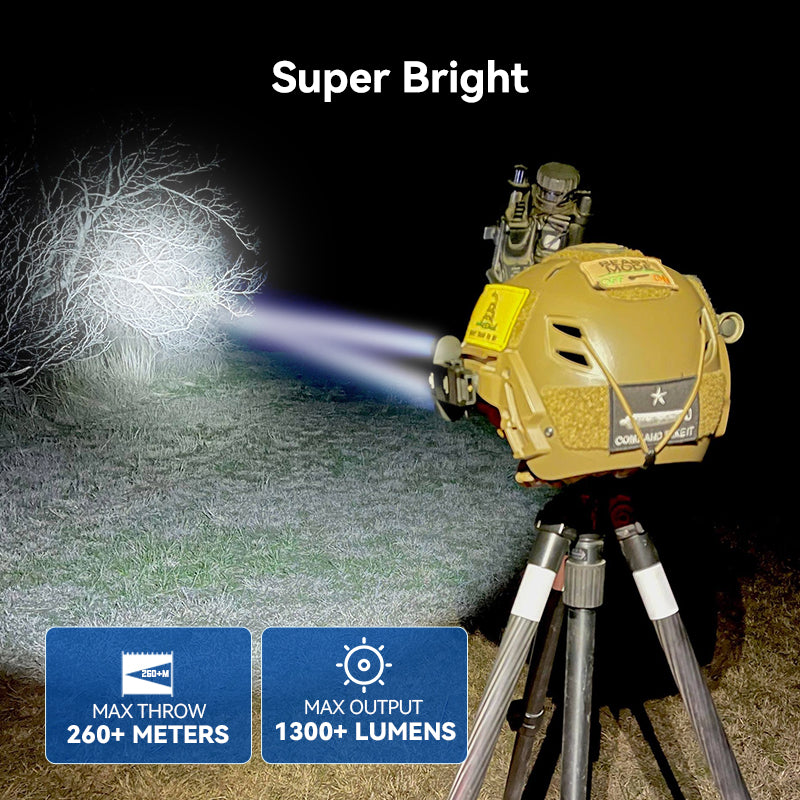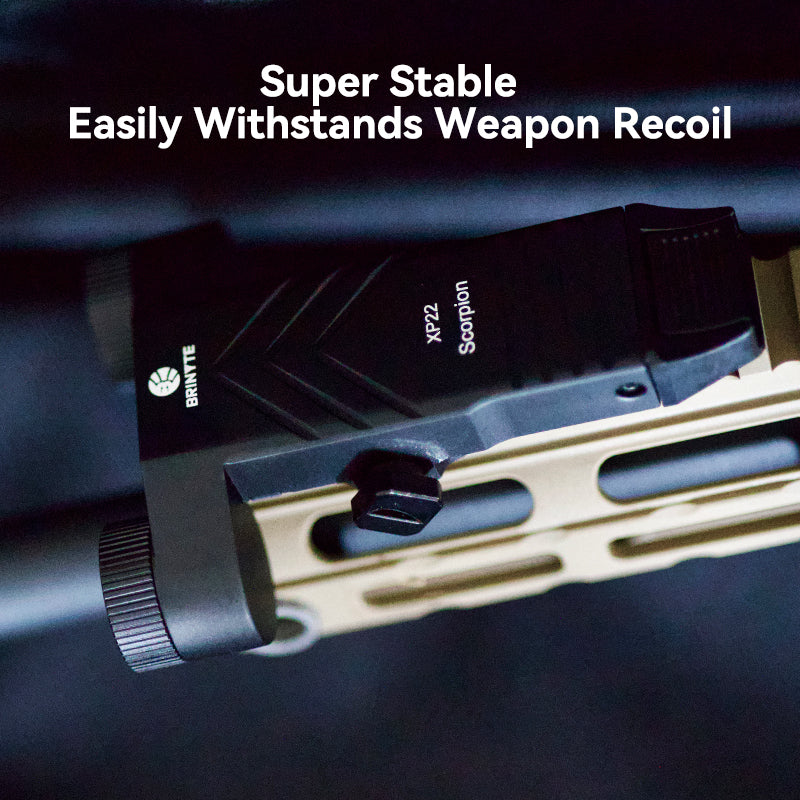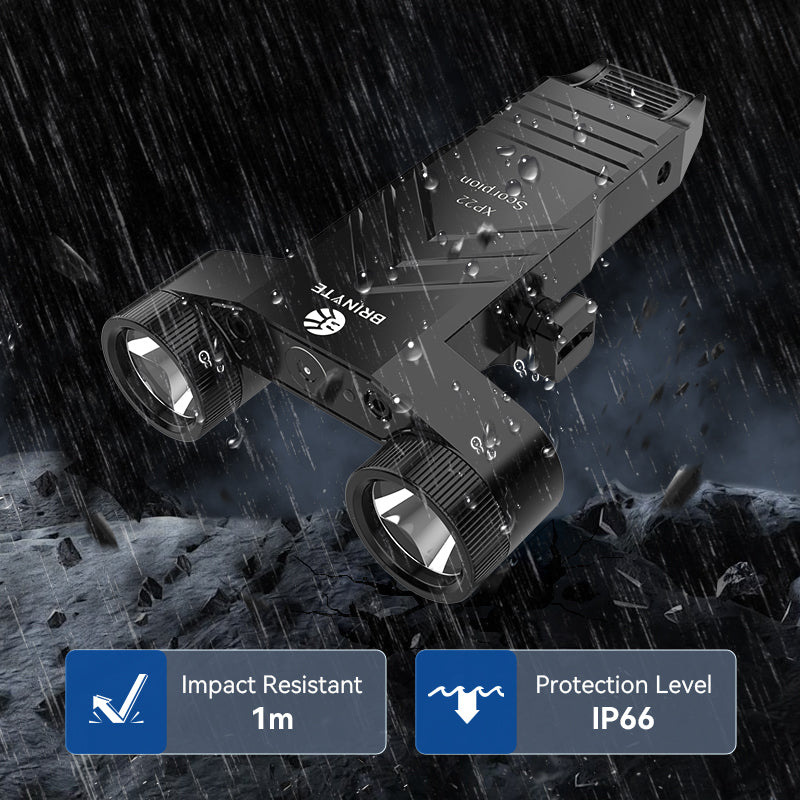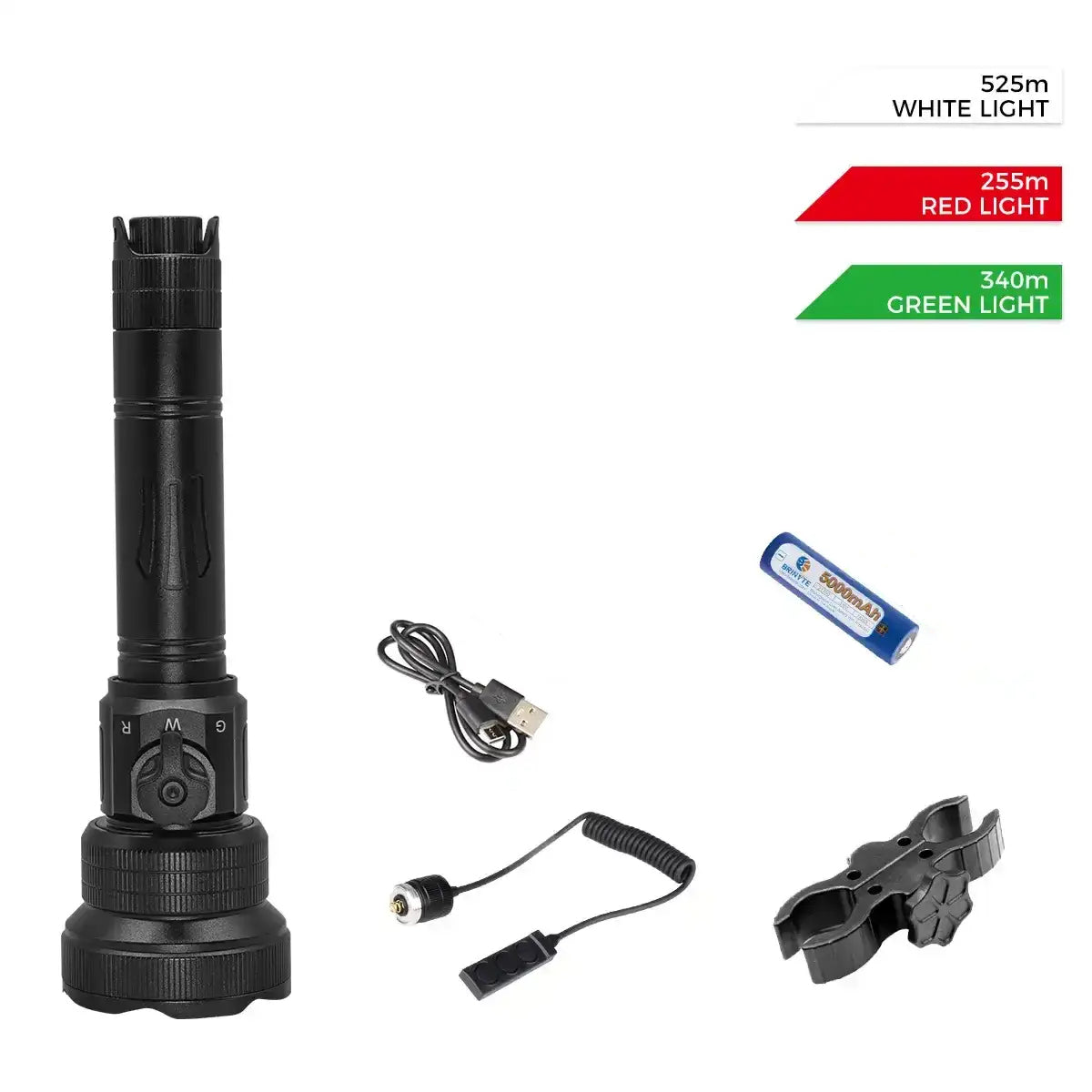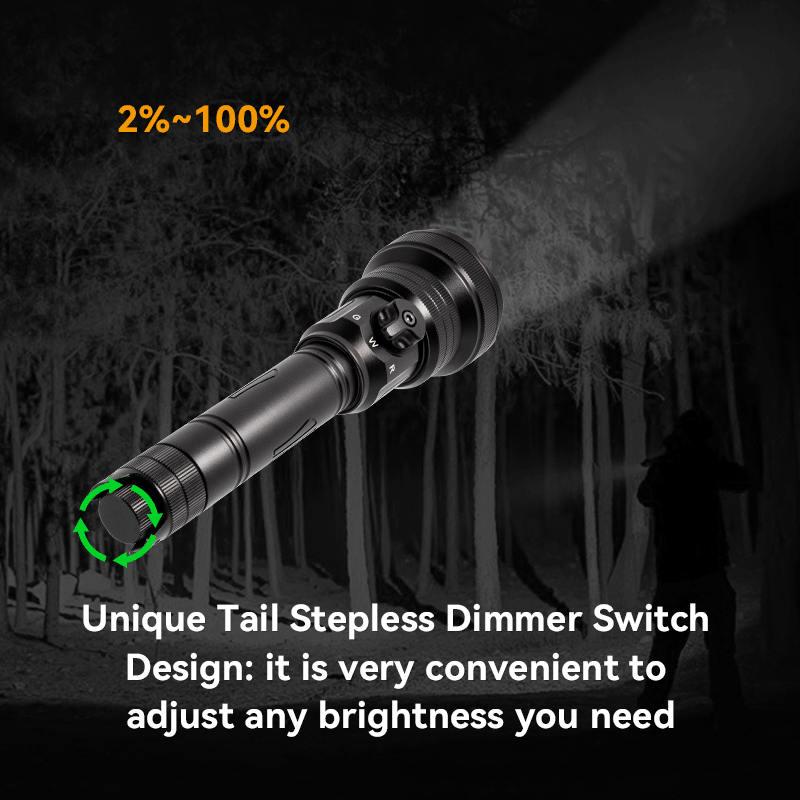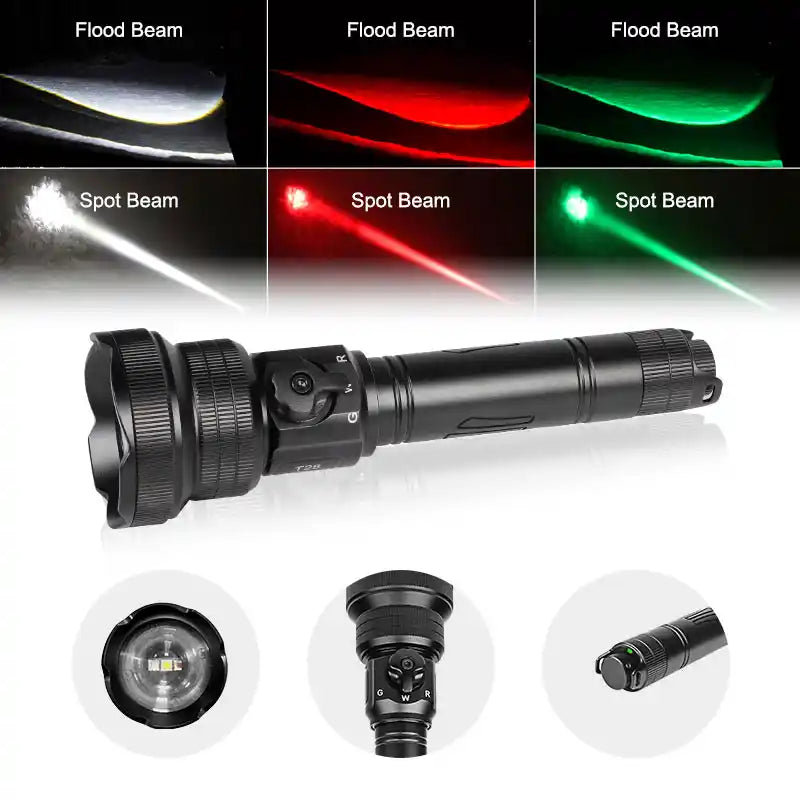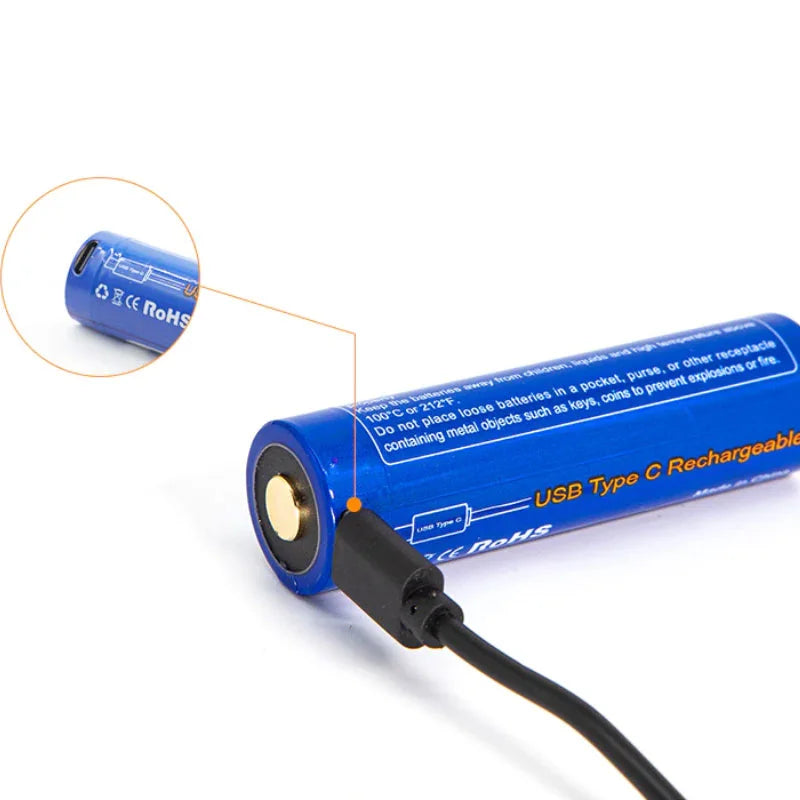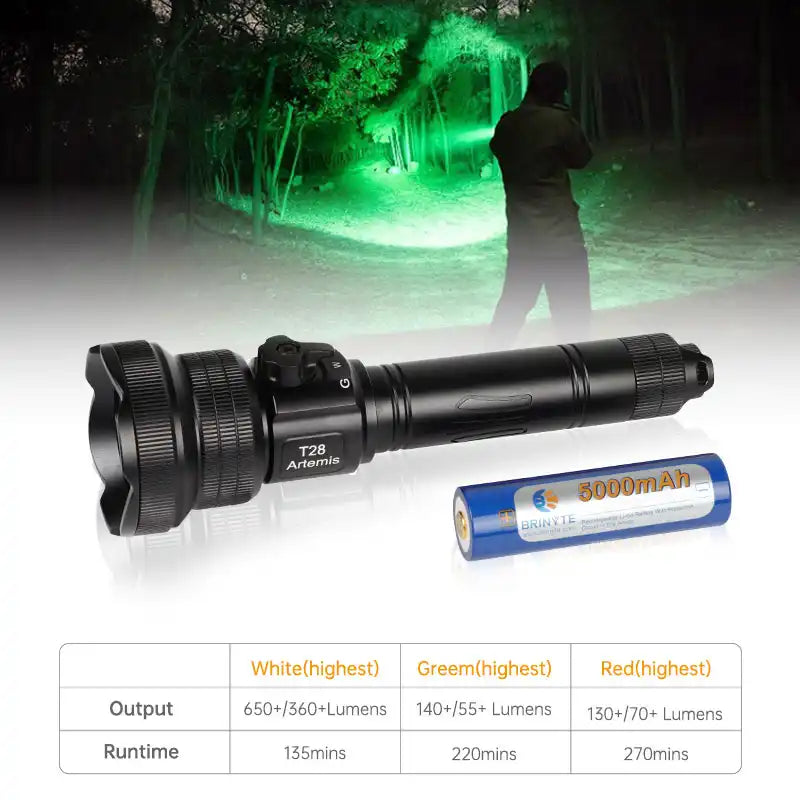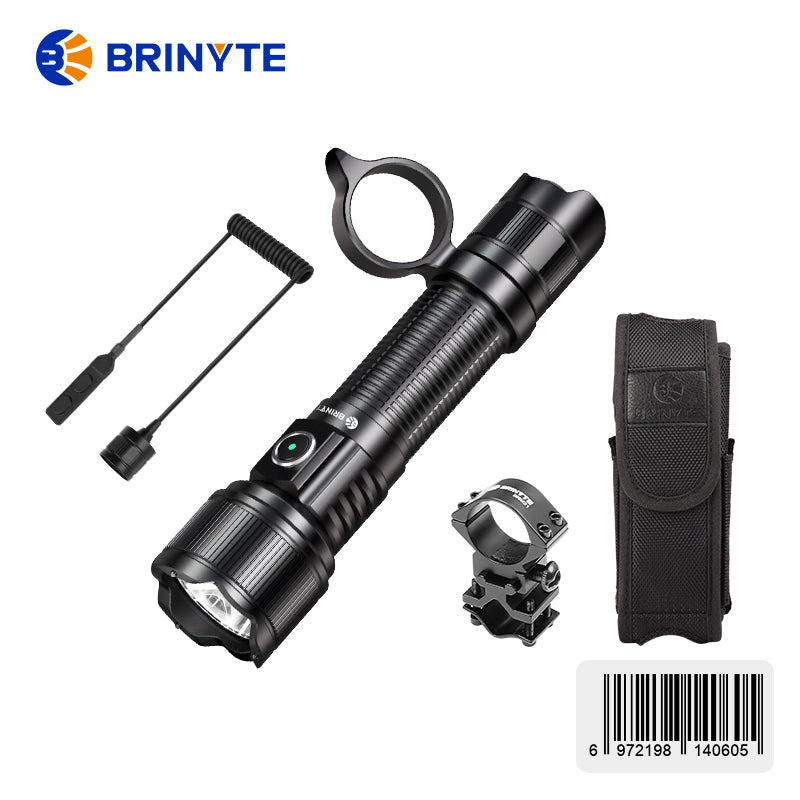In the ever-evolving world of hunting, the practice of pursuing predators under the cover of darkness has undergone a revolutionary transformation. This article explores the strategic use of red light technology in predator hunting, delving into its evolution, significance, and the crucial role it plays in enhancing visibility while minimizing disturbance.
A. Evolution of predator hunting practices
Predator hunting has transitioned from traditional methods to sophisticated nocturnal pursuits. The development of advanced technologies, such as red light, has redefined how hunters approach the challenges of the night.
B. Emergence and significance of red light technology in nocturnal pursuits
The advent of red light technology has marked a significant advancement in predator hunting. Red light, with its unique properties, has become a game-changer, offering hunters a tactical advantage in low-light conditions.
C. The role of enhanced visibility and reduced detection in predator hunting
Visibility and stealth are paramount in predator hunting. Red light technology addresses these requirements by providing improved visibility without compromising the hunter's ability to remain undetected in the shadows.
Understanding Red Light Technology
A. Introduction to red light technology for hunting
Red light operates on a wavelength that is less disruptive to wildlife and preserves the hunter's night vision. Understanding the science behind red light is crucial for hunters seeking to optimize their nocturnal experiences.
B. Key features and advantages over other colors
-
Preservation of night vision: Red light minimally affects the hunter's ability to see in the dark, making it an ideal choice for preserving night-adapted vision.
-
Reduced disturbance to wildlife: The specific wavelength of red light is less likely to startle or disturb nocturnal predators, allowing hunters to approach with greater stealth.
-
Enhanced visibility in low-light conditions: Red light provides a balance between visibility and subtlety, offering hunters the ability to navigate and track predators in low-light environments.
Red Light Technology and Equipment
A. Overview of red light flashlights and spotlights
-
Compact and powerful tools: Red light flashlights and spotlights are designed for portability, allowing hunters to illuminate their surroundings effectively.
-
Extended battery life: Red light technology often comes with the advantage of extended battery life, ensuring that hunters have reliable illumination throughout their nocturnal pursuits.
B. Specialized red light scopes and optics
-
Amplifying ambient light: Red light scopes and optics amplify existing ambient light, providing hunters with a clearer and more detailed view of their surroundings.
-
Extended range of visibility: These specialized optics extend the range of visibility, enabling hunters to spot predators from a distance without alerting them.
C. Impact of red light on tracking and navigating in low-light environments
-
Traversing challenging terrains: Red light aids hunters in navigating through nocturnal environments with heightened clarity, revealing terrain features without disturbing the wildlife.
-
Effective tracking methods: The use of red light enhances tracking capabilities, allowing hunters to follow trails and approach predators with precision.
Advantages of Red Light in Predator Hunting
A. Improved visibility without compromising night vision
-
Strategic illumination: Red light provides strategic illumination, allowing hunters to see their surroundings without sacrificing their night vision.
-
Target identification: The use of red light aids in identifying targets with precision, ensuring accurate shot placement during nocturnal pursuits.
B. Reduced disturbance to nocturnal wildlife
-
Minimized impact on predator behavior: The specific wavelength of red light minimizes disruption to the natural behaviors of nocturnal predators, allowing for a more natural hunting experience.
-
Stealth and undetected approaches: Red light enables hunters to approach predators stealthily, reducing the likelihood of alerting them to the hunter's presence.
C. Enhanced stealth and detection avoidance during predator pursuits
-
Maintaining the element of surprise: Red light technology allows hunters to maintain the element of surprise, increasing the chances of a successful predator pursuit.
-
Reducing the risk of detection: The subtle glow of red light reduces the risk of detection by predators, enhancing the overall effectiveness of nocturnal hunting strategies.
Species-Specific Considerations
A. Tailoring red light techniques for different predators
-
Understanding predator behavior: Adapting red light techniques based on the specific behaviors of different nocturnal predators is crucial for successful hunts.
-
Customized approaches for diverse species: Tailoring strategies for approaching and tracking specific predator species ensures a nuanced and effective hunting approach.
B. Adapting strategies for approaching and tracking specific nocturnal predator species
-
Leveraging red light for specific habitats: Adapting red light strategies based on the unique characteristics of nocturnal habitats ensures optimal success in different environments.
-
Utilizing red light for predator decoy setups: Incorporating red light into decoy setups can attract predators and increase the effectiveness of luring them into range for a successful hunt.
Ethical and Legal Considerations
A. Responsible use of red light in accordance with hunting regulations
-
Adherence to hunting regulations: Hunters must operate within established regulations and seasons to ensure the ethical and legal use of red light technology in predator hunting.
-
Respect for ethical hunting principles: Even with technological advancements, hunters must uphold ethical principles, ensuring fair chase and humane hunting practices.
B. Minimizing impact on non-target wildlife during predator hunts
-
Avoiding unnecessary disturbance: Responsible hunters using red light prioritize minimizing the impact on non-target wildlife, promoting ethical and considerate hunting practices.
-
Strategies for reducing collateral disruption: Implementing strategies to reduce collateral disruption ensures that the focus remains on predator hunting without unnecessary disturbances to other wildlife.
C. Ethical considerations in leveraging technology for enhanced predator hunting precision
- Balancing technology and ethics: Hunters must strike a balance between leveraging technology for enhanced precision and maintaining ethical hunting practices, respecting the wildlife and the environment.
Training and Safety Measures
A. Importance of proper training for hunters using red light
-
Comprehensive understanding of red light technology: Proper training ensures that hunters have a comprehensive understanding of red light technology and its applications in nocturnal hunting.
-
Night vision preservation techniques: Training should include techniques for preserving night vision and maximizing the effectiveness of red light during hunts.
B. Understanding the behavior of nocturnal predator species
-
Insight into predator behaviors: A thorough understanding of the behaviors of nocturnal predator species enhances a hunter's ability to make informed decisions during night hunts.
-
Adapting strategies based on species behavior: Hunters must adapt their strategies based on the specific behaviors of the predators they are pursuing, maximizing the chances of a successful hunt.
C. Safety precautions related to red light equipment usage
-
Proper handling and storage of red light equipment: Hunters should receive training on the safe handling and storage of red light equipment to minimize the risk of accidents during night hunts.
-
Effective communication strategies for coordinated predator hunting parties: Coordinated communication among hunting parties using red light ensures safety and enhances the overall success of nocturnal pursuits.
D. Communication strategies for coordinated predator hunting parties
-
Clear communication in low-light conditions: Effective communication is crucial for coordinated predator hunting parties, especially in low-light conditions where visibility is limited.
-
Coordination for successful nocturnal hunts: Well-coordinated communication strategies contribute to the success of nocturnal hunts, allowing hunters to work together efficiently and safely.
Success Stories and Testimonials
A. Real-life experiences of hunters using red light for predator hunting
-
Improved shot placement and accuracy with red light: Hunters share their experiences of how red light technology has enhanced shot placement and overall accuracy during nocturnal predator hunts.
-
Enhanced hunting success during low-light conditions: Testimonials highlight increased success rates in nocturnal predator hunting scenarios where red light technology is employed.
-
Positive feedback on reduced disturbance to surrounding wildlife: Hunters recognize the benefits of red light in minimizing the disruption to the natural behaviors of wildlife during predator pursuits.
Challenges and Solutions
A. Addressing challenges associated with red light predator hunting
-
Environmental factors affecting red light visibility: Strategies for overcoming challenges posed by weather conditions and environmental factors that may impact the effectiveness of red light.
-
Mitigating risks of human or wildlife encounters: Measures to reduce the risk of encounters with both human and wildlife populations, ensuring the safety of all parties involved in red light predator hunts.
-
Technical challenges and advancements in red light technology: Continuous improvements in red light technology to address technical challenges and enhance the overall performance of night hunting equipment.
Conservation and Wildlife Management
A. The role of predator hunting in wildlife population control
-
Balancing predator-prey dynamics: Responsible predator hunting, facilitated by red light technology, contributes to maintaining a balanced predator-prey ecosystem.
-
Contributing to sustainable predator management practices with red light: Ethical use of red light aligns with principles of sustainability, ensuring the preservation of wildlife populations for future generations.
-
Collaborative efforts between hunters and conservationists for effective predator population control: Recognizing the importance of collaboration between hunters and conservationists in implementing effective predator population control practices.
Future Trends and Innovations
A. Emerging technologies in red light predator hunting
-
Integration of smart optics and navigation systems: Exploration of how smart technologies will further enhance the capabilities of red light equipment for predator hunting.
-
Potential advancements in red light camouflage for hunters: Anticipation of innovations in camouflage technology designed specifically for the conditions of night hunting with red light.
-
Influence of regulatory changes on the future of red light predator hunting: Consideration of potential changes in regulations and how they might shape the future landscape of predator hunting with red light.
Conclusion
- Recap of the benefits of predator hunting with red light
- Emphasis on responsible and ethical use of technology
- Anticipation of future trends and innovations in red light predator hunting, highlighting the integral role that red light plays in modern predator hunting practices.



